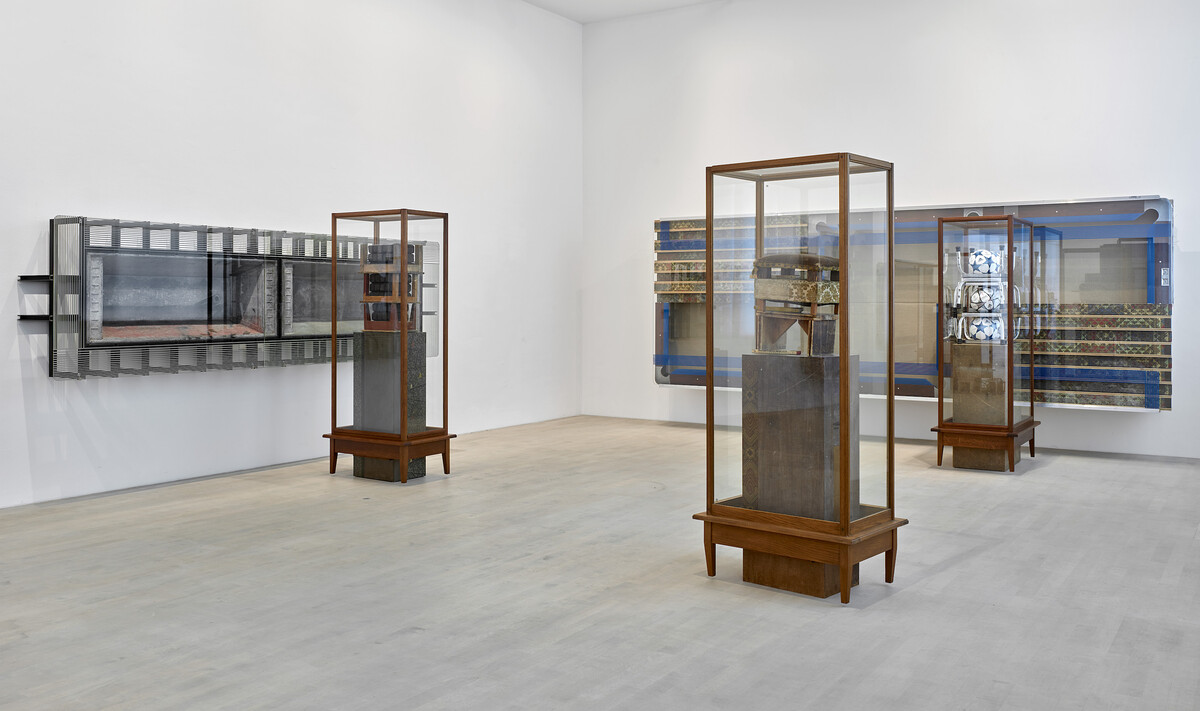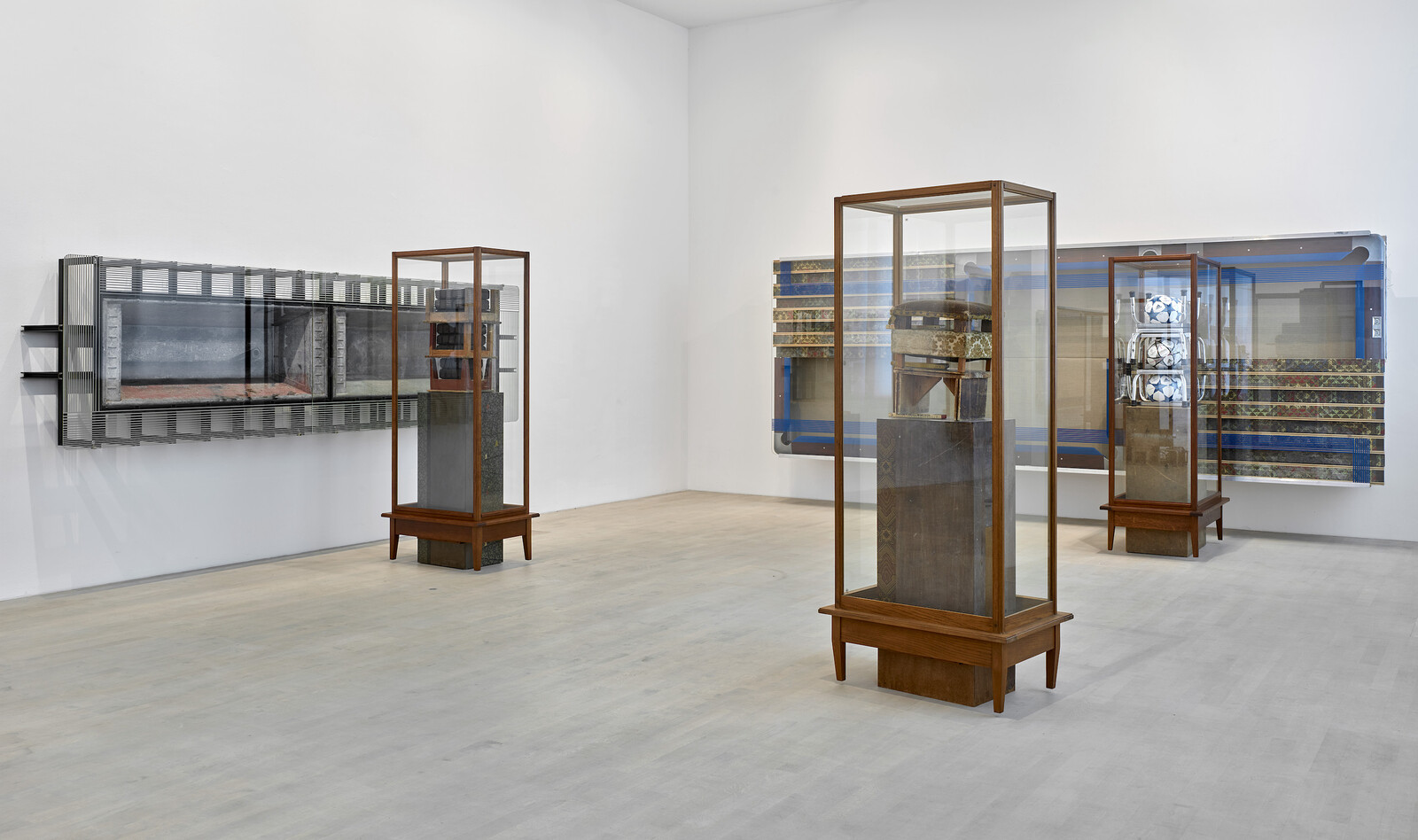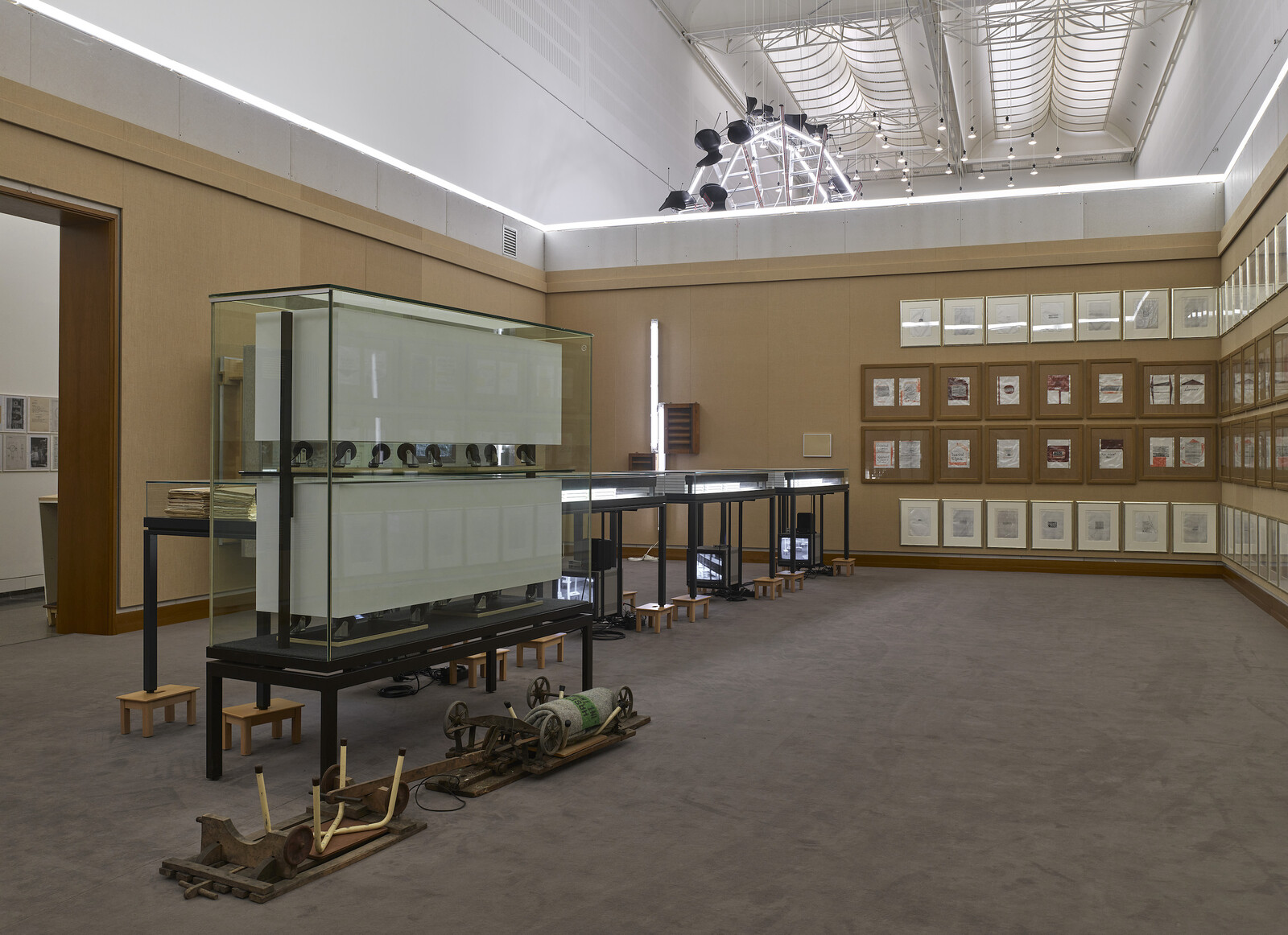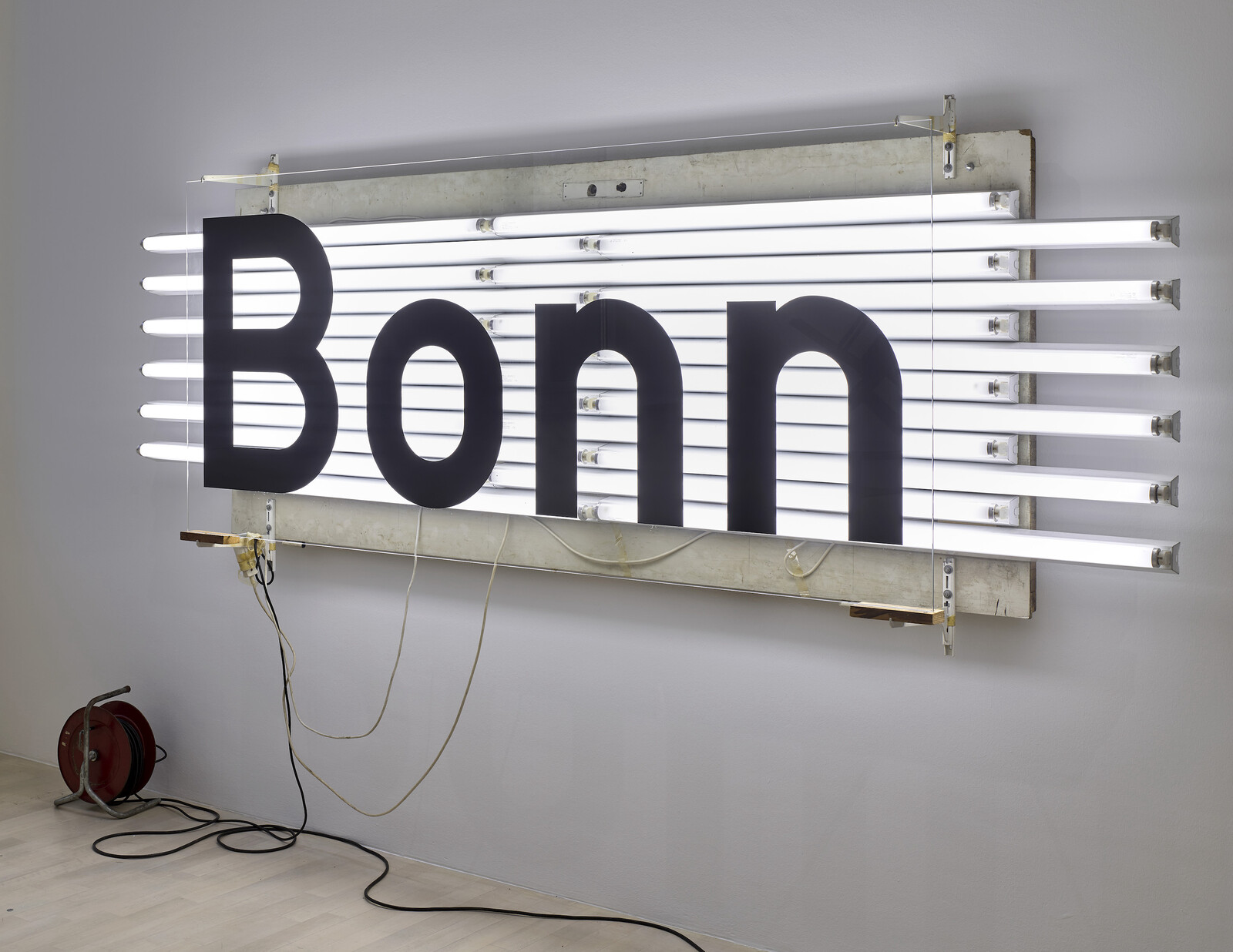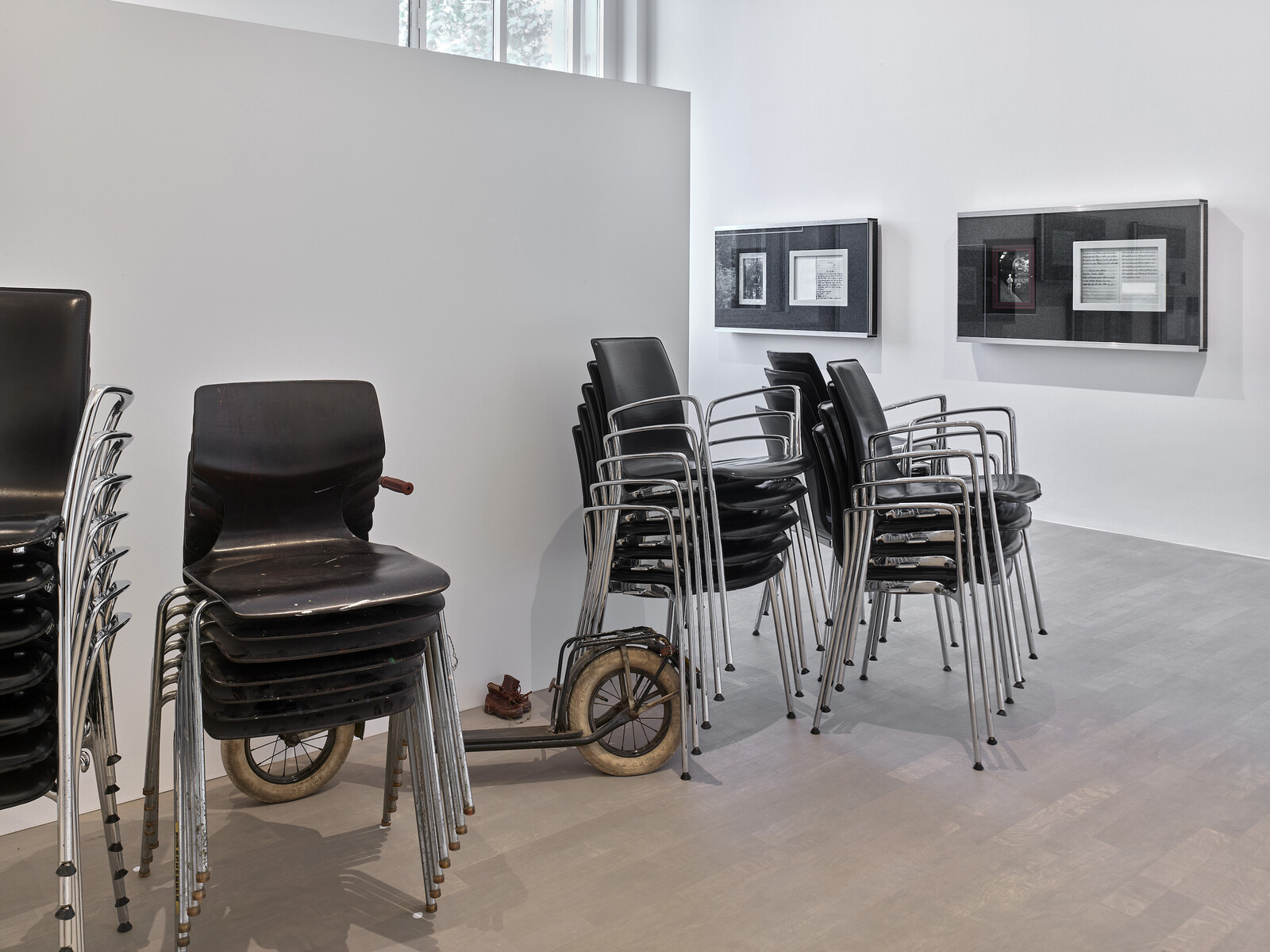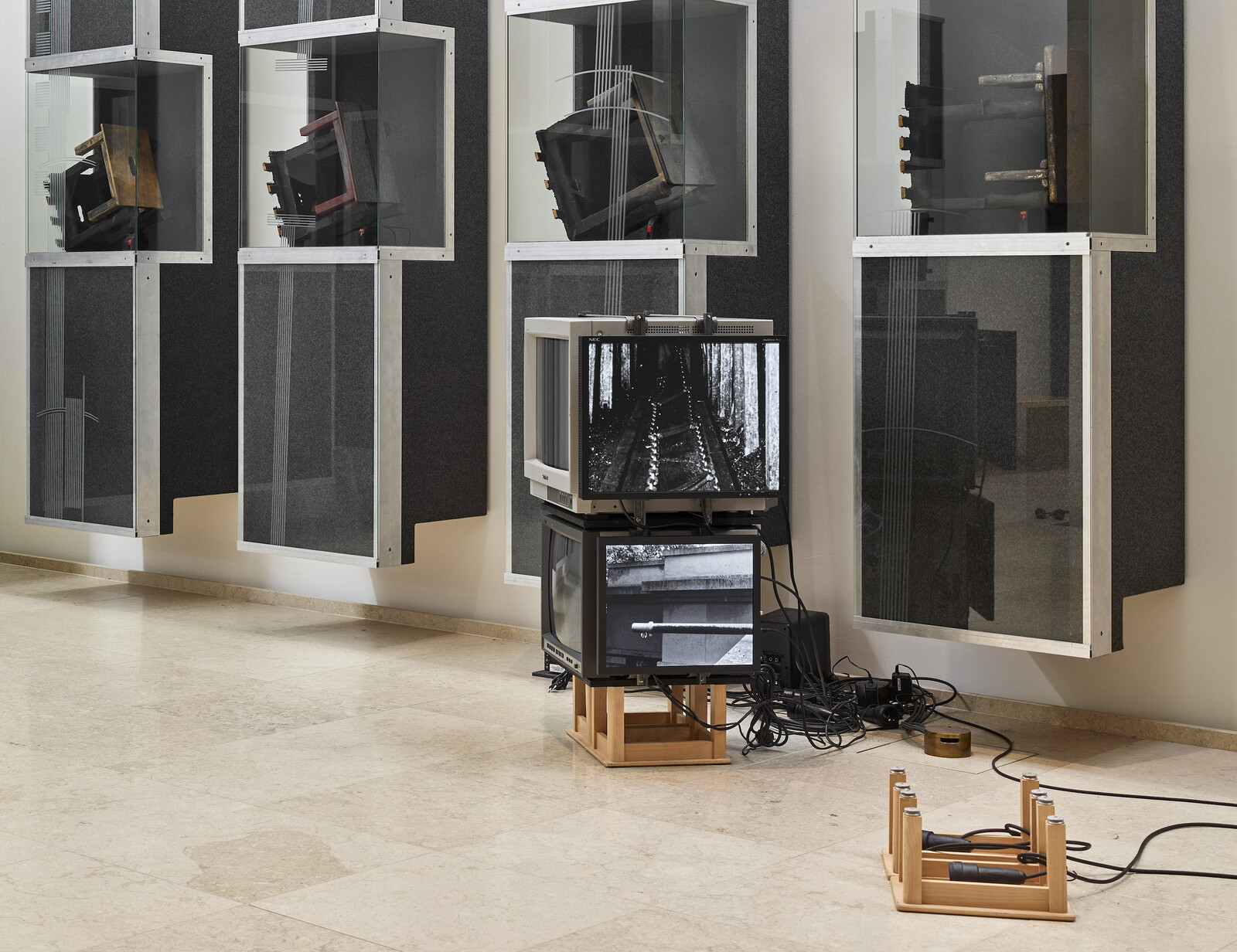For the last four decades, Reinhard Mucha has been making sculptures and installations that speak in the tongue of bureaucratic systems and engage a distinct object vocabulary. There are standardized furnishings of museum display and archiving (dark wood frames, felt linings, plate glass) but also behind-the-scenes elements of technical installation and found materials from the past. Elaborate wall-based sculptures are part display-case, part carefully crafted autonomous structure, revealing their workmanship with cross-section views. Rooms built within rooms provide extra spatial frames. There is something fetishistic in Mucha’s reverence for these textures and his compulsive collecting and archiving of materials and documents, but his works pointedly question whether what to show is equal to how. These tendencies unfold to the full in this two-venue retrospective—the 72-year-old artist’s first—in his hometown of Düsseldorf.
A single large hall on the ground floor of K20 brings together several significant installations, the centerpiece of which is Das Figur-Grund Problem in der Architektur des Barock (für dich allein bleibt nur das Grab) [The Figure-Ground Problem in Baroque Architecture (for you alone is only the grave)] (1985/2022). This virtuosic construction conjures a Ferris wheel and “wall of death” from shiny aluminum ladders, office chairs and tables, trussed together with tape and zip ties, held taut with metal cables, and lit with fluorescent strips. It is astounding that this baroque vision actually holds together, given its apparently provisional nature and the self-evidence of its constituent elements. Both playful and precise, it is a carnival of bureaucracy that keeps the whole and its parts in exquisite equilibrium.
Mucha studied at the Düsseldorf Art Academy in the 1970s and since the early 1980s has had a studio in a 1908 former railway administration building. The artist’s claims on this city were given an official stamp in 2002 when K21 opened in the former state parliamentary building, and Das Deutschlandgerät [The Germany Device] (1990/2002/2021), an enormous work by Mucha, was given pride of place. (In recent years its permanence has been a source of local controversy.) Originally made for the German Pavilion of the 44th Venice Biennial, this forms the center of the retrospective’s second venue, which unfolds through thirteen surrounding rooms. A cell clad in travertine, it is lined with Mucha’s signature wall-objects: precisely construed arrangements of aluminum profiles with felt linings in which the floorboards from his studio are preserved behind reflective sheets of glass. A second sequence of glassed-in wall-objects in the exterior space each houses a small wooden footstool (another signature Mucha element.) A rumbling soundtrack of cars passing over a bridge describes the relentlessness of the post-industrial everyday.
The manic repetition and gravitational pull of all these weighty materials and hard reflective surfaces contrast with the playful levity of the Ferris wheel. But a closer look here reveals subtle hints of instability. Each of the displayed footstools is tilted at an angle, a destabilizing gesture that recurs throughout Mucha’s sculpture, where a tape measure might be wedged under one leg of a stool, or a heavy vitrine propped up on ridiculous little supports or casters. The work’s title, Das Deutschlandgerät, is borrowed from a patented mechanism designed to hoist derailed trains back onto the tracks. Exactly this, of course, was happening in Mucha’s homeland when the work was first exhibited, a few months before Germany’s official reunification, putting a country back on track that had been derailed by its totalitarian past.
There are layers of latent meaning beneath the surfaces of Mucha’s sculptures. Evidence is kept and filed away for later or obscured behind dizzying glass reflections. In another large installation, Wartesaal [Waiting Room], first shown in 1982, narrow metal shelves store 242 handmade replicas of train station name signs, each six letters long. The names are taken from a German railway booklet from 1943, revised in 1948: the shifting history of this place is intrinsic. There are hollow echoes of the Third Reich’s gruesome administrative logic behind Mucha’s meticulous storage systems. Place names conjure territory that is still in limbo, unrecovered, unsure of its identity, waiting for resolution.
Elsewhere black and white photographs, personal documents and object relics from Mucha’s past interject tenderness, irony, or humor into administrative functions. In Schnee von gestern – Auszüge aus dem großen Kalender III [Snows of Yesteryear – Excerpts from the Big Calendar III ] in K20, accumulated evidence in A4 format, filed in plastic sleeves, framed and hung on the wall in two rows, are like a Bildungsroman plotting out Mucha’s journey to becoming an artist. There are official documents from military service and an internship in a hospital, notes and diagrams from his apprenticeship as a blacksmith, interspersed self-portraits, and neatly labeled plant specimens. It asks what is it like to be a student, a worker, an artist—a man—born in West Germany in 1950. One sentence appears repeatedly like a mantra across the material: “Nur einer darf krankschreiben. Der Arzt.” Only one person can write a sick note. The Doctor. Who is the doctor that forms a diagnosis? And who is the patient here? An individual? A whole society?
In Kopfdiktate [Head Dictations] (1980/90), at K21, Mucha’s own schoolboy dictation exercises, completed in neat cursive writing, both replicate and expose an authoritarian strain (be orderly, be quiet, do not disturb). Unlike Martin Kippenberger, three years younger, who chose the tactic of wholesale (self-)destruction, or Rosemarie Trockel, born 1952, with her shape-shifting strategy of undermining, Mucha’s aim is not overthrow. Instead, he represents and repeats given structures, adhering to their parameters in his modes of display, staying in the lines, while performing gestures of disruption or shifts from within. The question of how to respond to authority in a society where authoritarianism was at the root of its historical calamity remains open.
Mucha sets himself squarely in relation to patriarchal power systems, whether political or artworld (for a while in the 80s he was considered to be the heir to Joseph Beuys’s throne), not questioning the apparatus itself. Rather we are led into a refractive space that revolves essentially around the self, or past selves, while photographs of Mucha’s young son are like mirror images leading to the future. Time shifts and mutates but the structures remain. This can devolve into dull, formal repetition, in-jokes that fall flat, or endless self-citation. Room after room of wall objects seem to end in redundancy. But poetry can emerge from the pedantry of saving, ordering, displaying, repeating. The singular opportunity for immersion that this show offers asks: What are the constituent parts of a life? Or of a place? The present moment slips away as sediments of the past are revealed. Time is always already looking back.
